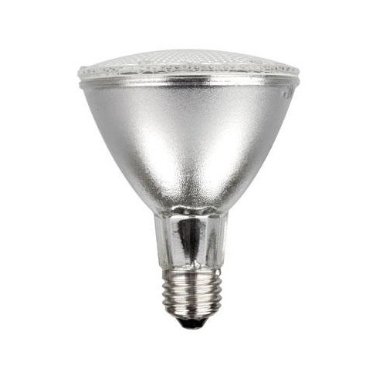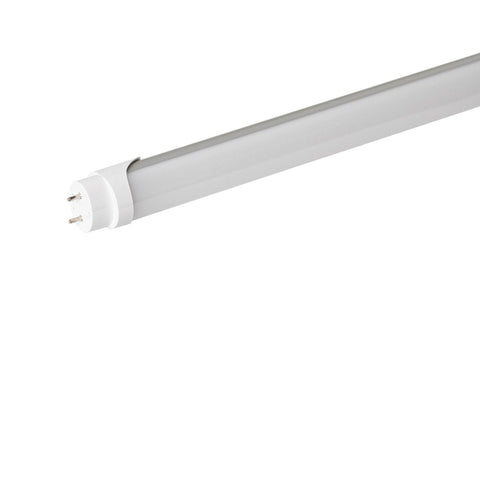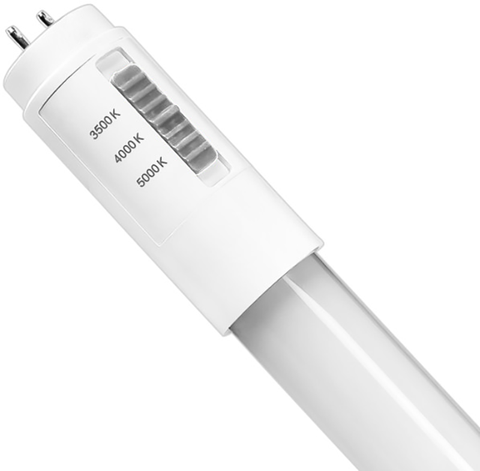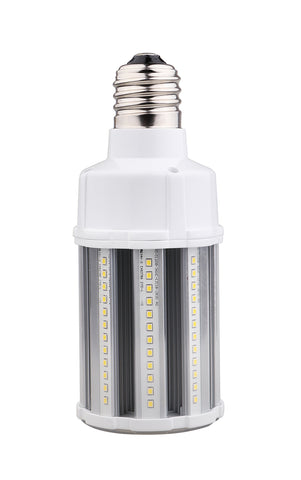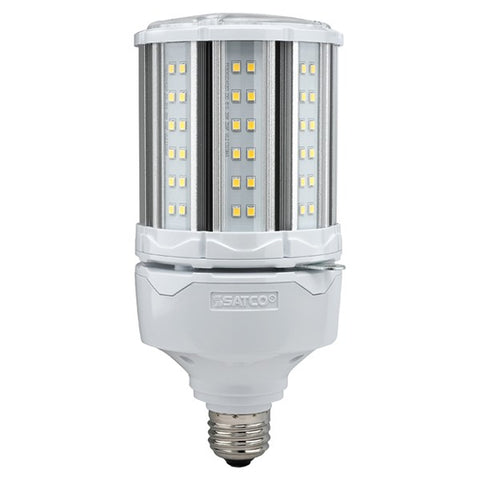Purchasing a Light Bulb [INFOGRAPHIC]
![Purchasing a Light Bulb [INFOGRAPHIC] Purchasing a Light Bulb [INFOGRAPHIC]](http://www.warehouse-lighting.com/cdn/shop/articles/purchasing-a-light-bulb_1_775x.png?v=1581695883)
Choosing the right lighting for your needs may seem intimidating. With all the information available and the different types on the market, here are the basics you need to know when purchasing a light bulb.
LED CFL or Incandescent
The first step is in purchasing a light bulb is to choose the right type. Here are a few things to know about the three most common lamp types.
Incandescent offers a warm glow in appearance. It is often used in decorative lighting intended for ambiance more than for general lighting due to its lack of high lumen output capabilities. It is the least energy efficient of the three types, but it is a favorite because of the attractive appearance and warm color temperature.
CFL stands for compact fluorescent light. Designed to be more efficient an application to a wider range of fixture types based on the shape, CFL is an improvement over traditional troffer-style tube lighting. This type of lighting can be used for either ambient or general lighting needs because it offers a better lumen out than incandescent lamps. This is the most common lamp type used in most residential areas because its affordable, high performing, and offers long-lasting operation.
LED, or light-emitting diodes, are quickly becoming a popular choice for several reasons. They offer the best in terms of wattage to lumen output, color temperature, longevity, and heat production. They are also money saving and energy saving which makes them a popular choice for the concerned consumer.
Lumens
Another important aspect of purchasing a light bulb is the lumen. If you choose an option that offers too many lumens for the space, it will be overpowering and too bright. If you do not choose a high enough lumen count, the space may appear dimly lit or shadowy in areas. Here are a few things to know about lumens.
Know your space. If you are looking for a bulb for a table lamp to provide task lighting or a bulb for an accent light in the bathroom, it is important to know the space you are trying to light. If you are looking for a dimmer light source for ambiance stay below 1000 lumens whereas anything used for general or task lighting should be above 1000 as a guideline.
Do not confuse lumens with the light appearance. Most of what we perceive as light appearance is a result of the color temperature of the bulb and not the lumen. Lumen is essentially brightness related to visibility. If you want a dimmer light, choose a lower lumen. If you want better visibility without being too harsh, choose a higher lumen in a warmer rather than cooler color temperature.
Color Temperature
The matter of color temperature is often confused with lumen. Let’s clear that up!
Color temperature is measured on the Kelvin scale ranging from 2700K (incandescent) to 7000K (LED). It is important to note that each bulb type offers a range within this scale with incandescent being the most limited and LED being the vastest in options. When choosing the color temperature, you should consider the tasks you will perform in the area to get the best fit. For example, you may want a warmer color temperature in the bedroom and a cooler temperature in the home office.
Warmer: Warmer light is closer to the yellow end of the spectrum. It offers an inviting warmth that is easy on the eyes and creates a relaxing ambiance for accent lighting. All three types of light bulbs are available at this end of the Kelvin scale. A warmer temperature is not ideal for task or general lighting because it may seem dimmer to the eyes and limit visibility for things like reading or cooking.
Cooler: A cooler light is less yellow and closer to a white or even blueish white at the higher end of the scale. Cool light more closely mimics daylight which makes a higher color temperature in the cool range ideal for task and general lighting because it helps with focus and visibility.
Wattage
The final matter to consider is the wattage. The wattage is how many amps of power are pulled to create the specified lumen output of the solution. This factor matters because wattage determines how efficient the solution is in terms of energy being consumed. The goal is to choose the highest lumen you need with the lowest possible wattage to get the best energy efficient solution. For instance, an LED bulb can produce up to 3000 lumens on a lower wattage of power ranging from 10-20 watts whereas an incandescent bulb can produce the same lumen output yet consumes an average of 60 watts to do the same job.
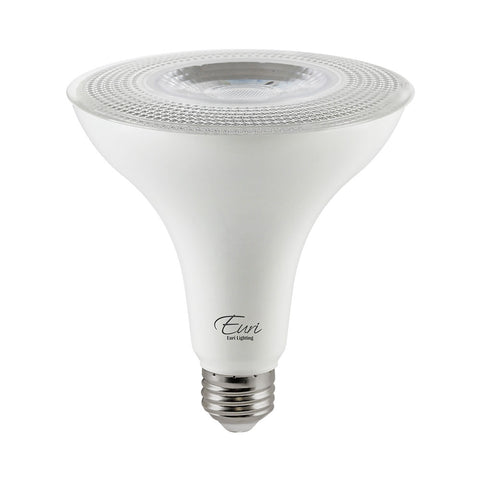
25PK LED PAR38 Long Neck Directional Bulb, 15W, 120V, 2700K, 3000K, 4000K or 5000K
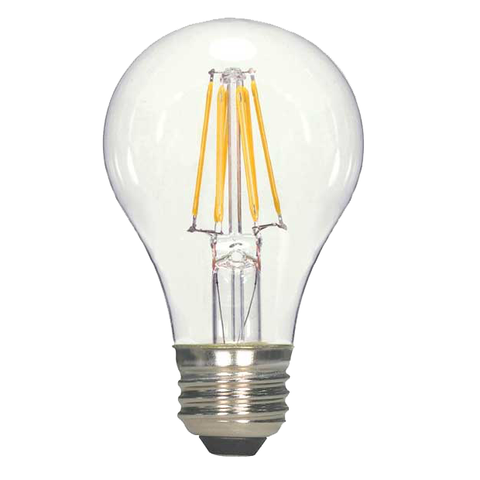
Bright LED Light Bulbs for Sale
Shop our large selection of discounted light bulbs. We have the shapes, sizes and base types you are looking.
View (290) Products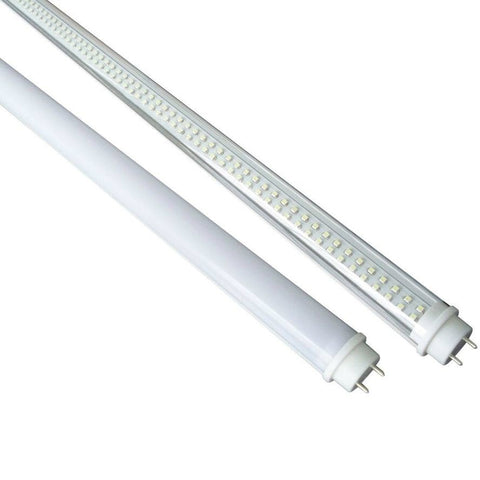
Shop our large selection of discounted ballast bypass and ballast compatible, T8 and T5 LED tube lights in 1, 2, 3 and 4 foot lengths.
View (91) Products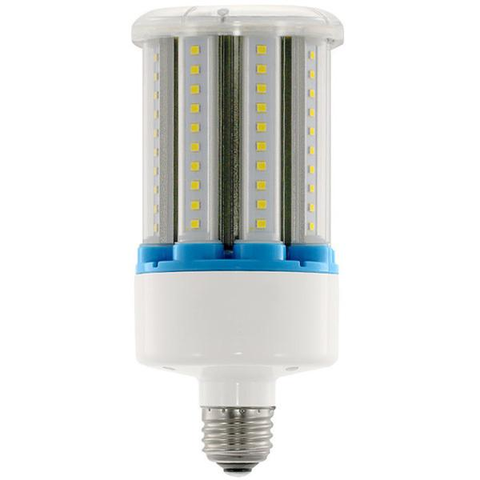
A cheap way to convert shoebox, wall pack, area, flood, cobra head lights and more to LED is to use our economical corn lights and bulbs. Just rewire the fixture, screw in and you're done quickly!
View (79) Products High Bay LED Lighting
High Bay LED Lighting
 Industrial Low Bay Lighting
Industrial Low Bay Lighting
 Industrial Strip Lights
Industrial Strip Lights
 Vapor Tight Lighting
Vapor Tight Lighting
 LED Shop Lights
LED Shop Lights
 Hazardous Area / Explosion Proof Lighting
Hazardous Area / Explosion Proof Lighting
 Loading Dock Lights
Loading Dock Lights
 Construction / Portable Lighting
Construction / Portable Lighting
 Industrial Ceiling Fans
Industrial Ceiling Fans
 LED Work Lights
LED Work Lights
 Clearance
Clearance
 Troffer Lights
Troffer Lights
 LED Flat Panel Lights
LED Flat Panel Lights
 Drop Ceiling Lights
Drop Ceiling Lights
 Suspended LED Lights
Suspended LED Lights
 Exit / Emergency
Exit / Emergency
 Wrap Lighting Fixtures
Wrap Lighting Fixtures
 Gooseneck and Barn Lights
Gooseneck and Barn Lights
 Commercial Stairway Lighting
Commercial Stairway Lighting
 Hospital Bed Lights
Hospital Bed Lights
 Commercial Sign Lights
Commercial Sign Lights
 UV Disinfecting Lights & Air Purifier Fixtures
UV Disinfecting Lights & Air Purifier Fixtures
 Recessed Lighting
Recessed Lighting
 Wafer Lighting
Wafer Lighting
 RGB LED Lights
RGB LED Lights
 Grow Lights
Grow Lights
 Refrigeration Lighting
Refrigeration Lighting
 LED Flood Lights
LED Flood Lights
 Outdoor Wall Lights
Outdoor Wall Lights
 LED Area Lights
LED Area Lights
 Parking Lot Lights & Poles
Parking Lot Lights & Poles
 Outdoor Post Top Lights
Outdoor Post Top Lights
 LED Stadium Lighting
LED Stadium Lighting
 Canopy Lights
Canopy Lights
 Security Lights
Security Lights
 LED Bollard Lights
LED Bollard Lights
 Solar Powered LED Lighting
Solar Powered LED Lighting
 Dusk to Dawn Lights
Dusk to Dawn Lights
 Landscape Lighting
Landscape Lighting
 Outdoor String Lights
Outdoor String Lights
 Coastal Wildlife Lighting
Coastal Wildlife Lighting
 Outdoor House Lights
Outdoor House Lights
 Ceiling Fans
Ceiling Fans
 Ceiling Lights
Ceiling Lights
 Chandelier Lights
Chandelier Lights
 Pendant Lighting
Pendant Lighting
 Island Lights
Island Lights
 Track Lighting
Track Lighting
 Under Cabinet Lighting
Under Cabinet Lighting
 Vanity Lights
Vanity Lights
 Wall Sconces
Wall Sconces
 LED Tape Lights
LED Tape Lights
 LED Mirrors
LED Mirrors
 LED Light Bulbs
LED Light Bulbs
 LED Tube Lights
LED Tube Lights
 LED Corn Lights
LED Corn Lights
 Vintage LED Bulbs
Vintage LED Bulbs
 Decorative LED Bulbs
Decorative LED Bulbs
 Fluorescent Light Bulbs
Fluorescent Light Bulbs
 Metal Halide Lamps
Metal Halide Lamps
 Shatterproof Light Bulbs
Shatterproof Light Bulbs
 LED Magnetic Strip Retrofit Kits
LED Magnetic Strip Retrofit Kits
 LED Strip Light Retrofit Kits
LED Strip Light Retrofit Kits
 High Bay LED Retrofit Kits
High Bay LED Retrofit Kits
 LED Troffer Retrofit Kits
LED Troffer Retrofit Kits
 LED Wall Pack Retrofit
LED Wall Pack Retrofit
 LED Street Light Retrofit Kits
LED Street Light Retrofit Kits
 Recessed Lighting LED Retrofit Kits
Recessed Lighting LED Retrofit Kits
 CFL Ballasts
CFL Ballasts
 Electronic Halide Ballast
Electronic Halide Ballast
 Emergency Ballasts & Inverters
Emergency Ballasts & Inverters
 Fluorescent Ballasts
Fluorescent Ballasts
 LED Drivers
LED Drivers
 High Pressure Sodium Ballasts
High Pressure Sodium Ballasts
 Metal Halide (HID) Ballasts
Metal Halide (HID) Ballasts
 Pulse Start Metal Halide Ballasts
Pulse Start Metal Halide Ballasts
 Electric Vehicle Chargers
Electric Vehicle Chargers
 Ballasts & Drivers
Ballasts & Drivers
 Electrical Supplies
Electrical Supplies
 Electrical Tools
Electrical Tools
 Switches & Receptacles
Switches & Receptacles
 Hand Dryers
Hand Dryers
 Electrical Power Cords
Electrical Power Cords
 Sensors and Timers
Sensors and Timers
 Smart Home Automation
Smart Home Automation
 High Bay Occupancy Sensors
High Bay Occupancy Sensors
 Outdoor Motion Sensor Lights
Outdoor Motion Sensor Lights
 Walkway Lights
Walkway Lights
 Office Lights
Office Lights
 Gym Lighting
Gym Lighting
 Exterior Building Lights
Exterior Building Lights
 Sports Lighting
Sports Lighting
 Hospital Lights
Hospital Lights
 Airport Lights
Airport Lights
 Classroom Lights
Classroom Lights
 Factory Lights
Factory Lights
 Restaurant Lights
Restaurant Lights
 Corridor Lights
Corridor Lights
 Church Lights
Church Lights


